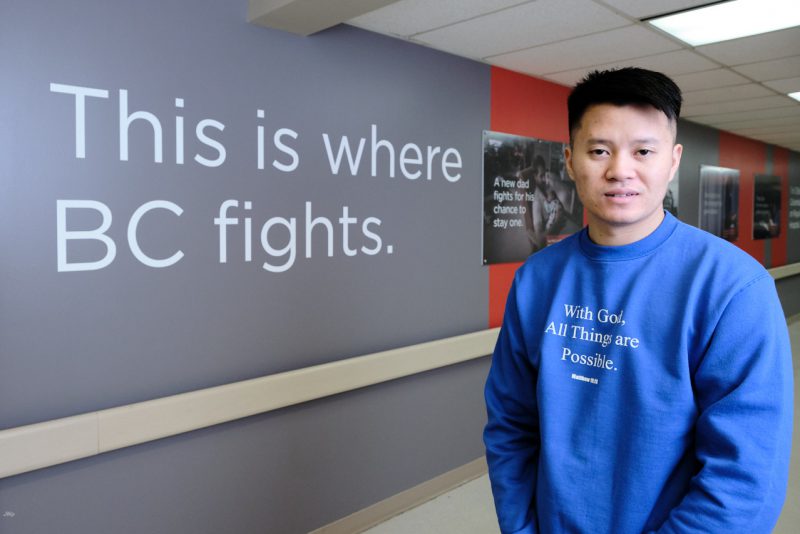
“You know, blood pressure is like a silent killer if you’re not really watching it,” Ty remarks almost three years later. “I didn’t really watch my blood pressure.”
Type B dissection involves a tear in the descending part of the aorta, which is the main artery that carries blood away from the heart to the rest of the body. While dissections are not a common injury, and especially not for someone Ty’s age, high blood pressure is a main cause, explains Dr. Matt Bernard, a Royal Columbian internal medicine specialist who was involved in Ty’s care.
“You can imagine, you have this arching aorta, blood is coming up out of the heart, it’s hitting this curve, it’s being forced around the curve of the aorta, and over time that is going to have a certain amount of stress on the wall of the aorta, and it could cause a tear,” says Dr. Bernard. “So high blood pressure is a strong risk factor.”
Complications
The first treatment for Type B dissections is usually not with surgery, but rather through aggressive blood pressure and heart rate control to allow the tear to begin to heal itself.
As Ty started to undergo this medical treatment, he faced another major threat – his kidneys were failing. Less than a week after Ty first arrived at Royal Columbian, a peritoneal dialysis (PD) catheter was inserted to help remove toxins from the blood.
Dr. Bernard says an aortic dissection can reduce the blood flow to organs like the kidneys, putting them at danger of acute injury.
“You might hope that the person has enough kidney reserve that even if there is an initial insult to the kidneys that requires that person to go on dialysis, that with time, as the kidneys recover from this injury, that there is enough blood flow and enough kidney reserve to get a person back off dialysis, but that may not be the case,” says Dr. Bernard.
In hospital already for these serious issues, Ty faced yet another emergency – he required brief resuscitation and epinephrine after he lost consciousness when his heart rate and blood pressure plummeted.
“The whole room just got all white, and I remember the nurses and doctors trying to wake me up,” Ty recalls while also acknowledging his memories are hazy. “And actually during that time, I thought I was being chased by someone.”
That same day, Ty had the aortic tear surgically treated with a graft to prevent a worsening of the dissection. He spent three days in the Intensive Care Unit before being moved back to the High Acuity Unit. Ten days later, he was transferred to a regular inpatient unit, and he was finally able to go back home two weeks after that.
In February 2020, Ty received a kidney transplant in Vancouver. Until that point, he had continued peritoneal dialysis and was working to regain his energy levels and previous weight. Despite the medical challenges, he is grateful to Royal Columbian.
“This hospital saved my life,” he says. “I am so thankful and grateful for all the doctors and nurses that came together to help me, revive me, and get me back to where I am today.”
